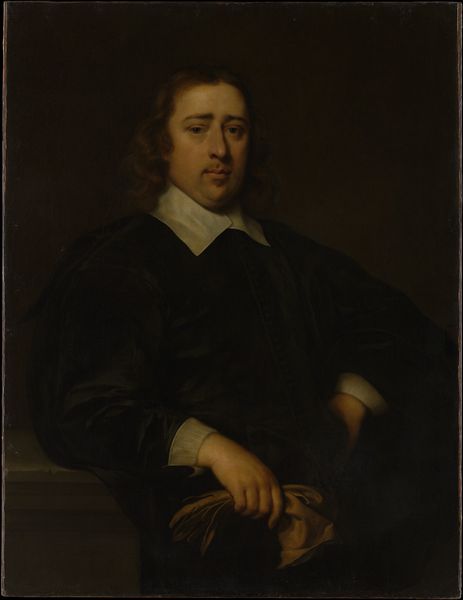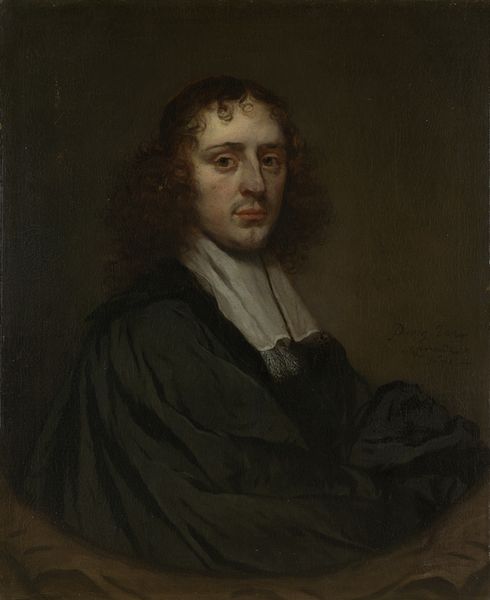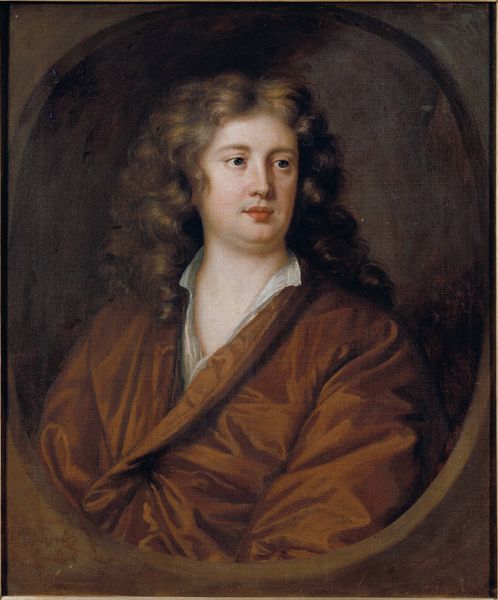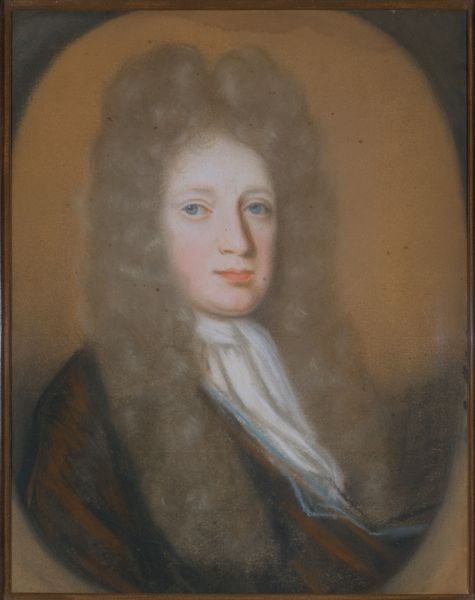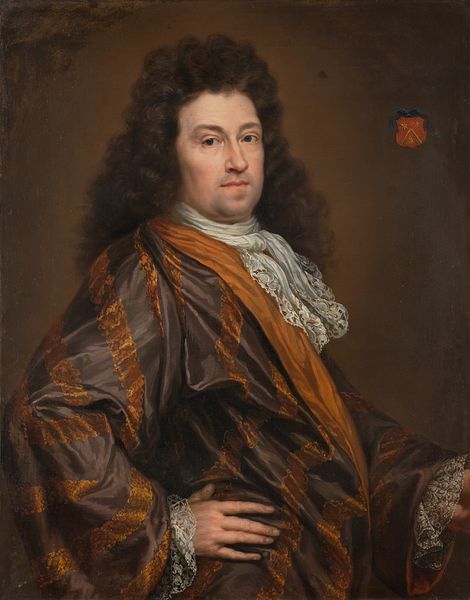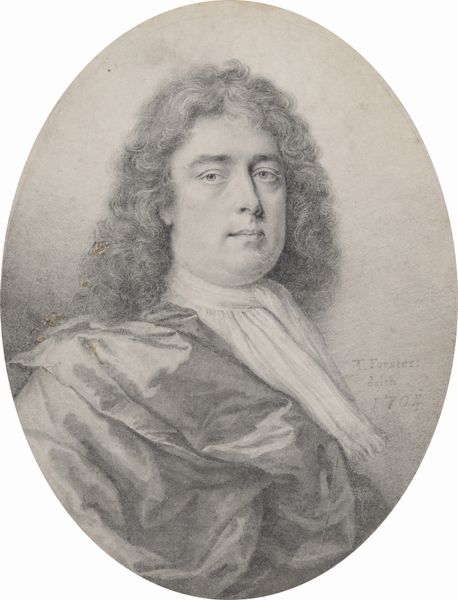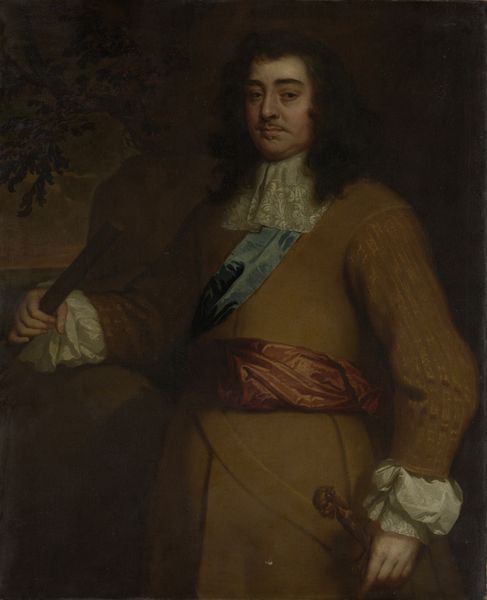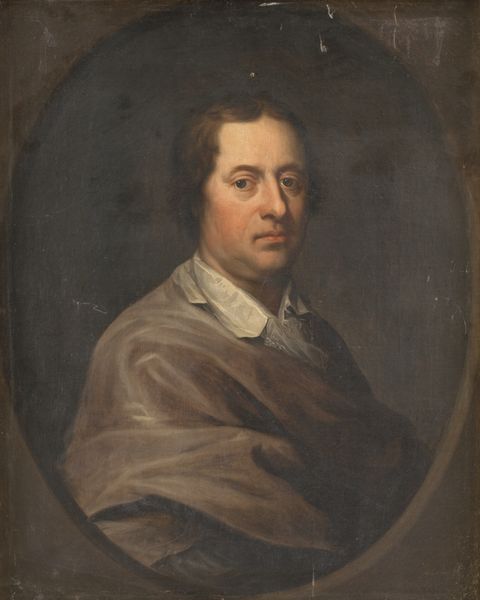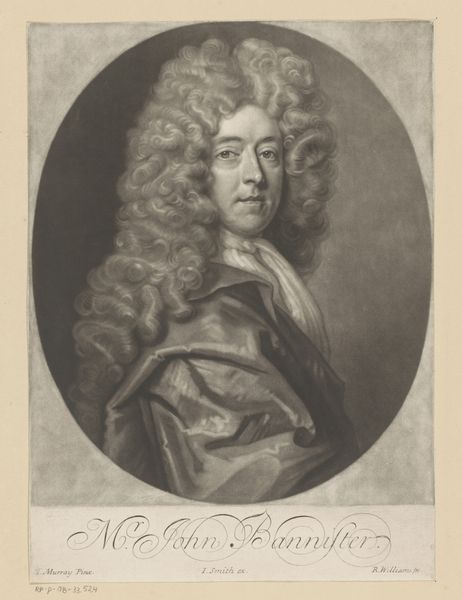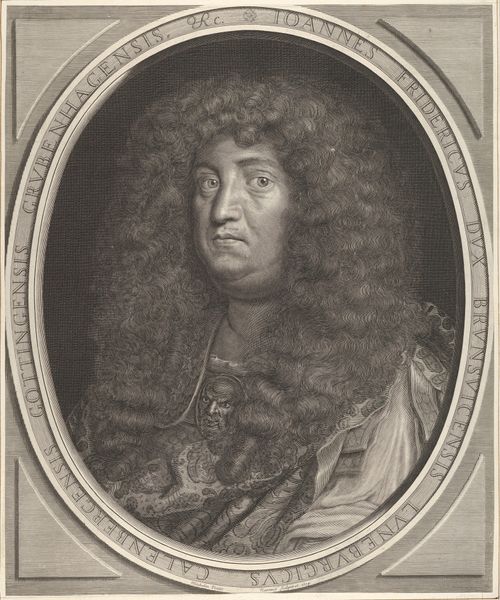
Bust Portrait of a Young Man (so-called Samuel Pepys) c. 1800
0:00
0:00
oil-on-canvas
#
dark-toned
#
unrealistic statue
#
dark image
#
dark silhouette
#
portrait head and shoulder
#
england
#
dark shape
#
animal portrait
#
mid-section and head portrait
#
surrealist
#
oil-on-canvas
#
self portrait
Dimensions: 29 x 22 in. (73.66 x 55.88 cm) (canvas)
Copyright: Public Domain
Editor: Here we have "Bust Portrait of a Young Man (so-called Samuel Pepys)," an oil-on-canvas from around 1800 attributed to Sir Peter Lely. It’s so dark and brooding. I'm immediately struck by how much the darkness obscures, almost to the point where the subject's face is the only discernible feature. What do you see in this piece, particularly beyond the immediate aesthetic? Curator: I see a commentary on representation itself, particularly around identity and historical narrative. The “so-called” in the title immediately complicates our understanding. Is this Samuel Pepys? And, more importantly, what does it mean to claim an identity, especially one associated with historical power, retrospectively? Editor: So, you're suggesting the uncertainty in the title is significant? Curator: Absolutely. Consider the late date—c. 1800— well after Pepys’s lifetime. This work exists within a specific socio-political moment, perhaps one where revisiting and appropriating historical figures served particular ideological purposes. Who commissioned this portrait, and what did “Samuel Pepys” symbolize to them? Moreover, how does the darkness contribute? Is it obscuring history, or perhaps highlighting the selective nature of memory and representation? Editor: That makes me wonder about the role of the artist too, then, in constructing or perpetuating those narratives. Curator: Precisely! Lely, the attributed artist, was himself a significant figure in courtly portraiture, so questions arise. Does attaching his name lend credibility? Does the painting itself question notions of authenticity and authority embedded within portraiture traditions? It's critical to think about this work within broader contexts of power, gender, and even race at the turn of the century, and how historical portraiture might reflect or challenge them. Editor: This really highlights how much a portrait can tell us beyond just a likeness. It’s fascinating to think about how the painting participates in larger cultural conversations about history and identity. Curator: Exactly. It becomes less about capturing an individual and more about reflecting a society's values, anxieties, and aspirations.
Comments
No comments
Be the first to comment and join the conversation on the ultimate creative platform.
